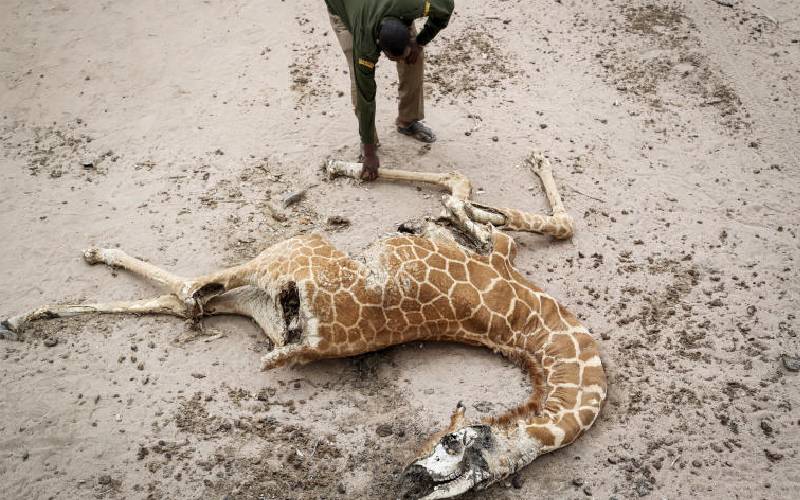×
The Standard e-Paper
Join Thousands Daily

Mohamed Mohamud, a ranger from the Sabuli Wildlife Conservancy, looks at the carcass of a giraffe near Matana Village, Wajir County. October 25, 2021. [AP]
Sometime in November last year, the National Drought Management Authority (NDMA) warned Garissa residents of a severe drought.